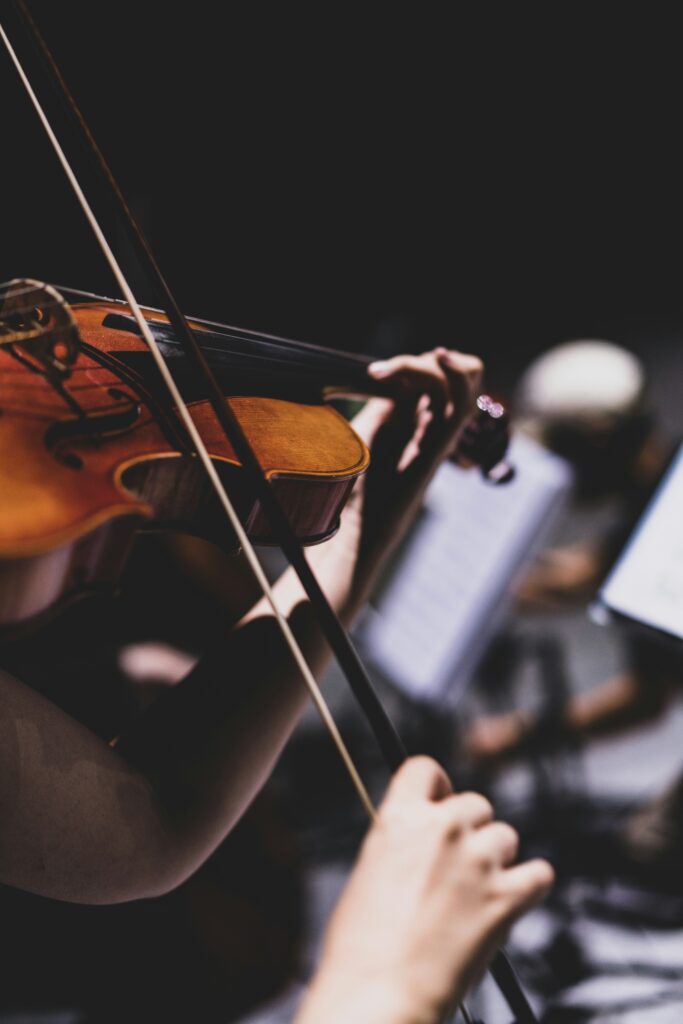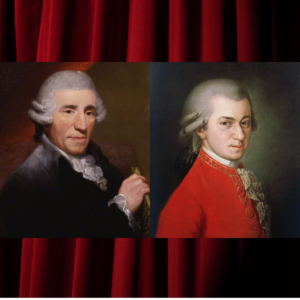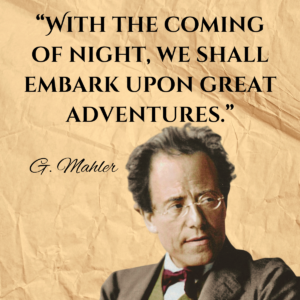When most people think of classical music, they picture calm and relaxing tune, something you would put after a long day. Bach fugues or Chopin’s charming nocturnes.
And to be honest, most pieces are like that: rich harmonies, flowing progressions, no sharp edges – just enchanting harmonies and pure serenity.
But sometimes, it can really pack a punch. Some classical works break the rules with their thunderous dissonance and unpredictable rhythms. These aren’t just background pieces – it’s music that truly grabs your attention and doesn’t let it go.
Music is a direct reflection of the soul of its creator. And composers, like any great artists, hardly ever live peaceful, carefree lives. Poverty, difficult relationships, broken hearts, and all kinds of personal demons – all these struggles are reflected in their music.
Music often tells more than a thousand words can, and for composers, it was their way of expressing their deepest feelings. The tougher their lives got, the more intense and dark their compositions became.
As a result, these pieces tend to be the most expressive and intense and won’t leave you emotionless after listening. So in this article, we’re exploring 7 of the most intense classical works ever written – pieces that break the mold and will leave you deeply impressed!

Subscribe to Classical Echoes Newsletter!
7. J.S. Bach – Toccata and Fugue in D minor
One of the most famous Bach works – and of the Baroque period in general. The opening from the Toccata section became iconic within modern culture. Many still associate it with the Dracula theme or memes.
However, it seems that most people have never heard the rest of the piece after the opening bars of the Toccata. And that’s unfortunate – they miss the most brilliant part of the piece, as Bach masterfully shows the power of the cathedral pipe organ.
The story of this piece is as dark as the piece itself. It was written somewhere between 1703 and 1749, which is basically most of Bach’s adult life. There is still debate about whether Bach is the actual composer, so unprecedented and unique is this work.
As the name suggests, the whole work consists of two parts: the toccata and the much longer and complex fugue. The dark tone of D minor and the majestic sound of the organ make a perfect combo – a true reflection of the nature of the piece.
Bach’s bold use of sequences, rapid passages and massive open chords is what makes the piece so intense. It wasn’t written to showcase compositional technique or complex music theory, but rather as an act of pure self-expression.
The main key to its powerful sound lies in the open chord sequences, where he builds momentum and simply delivers with force. At the culmination, he erupts in a wave of enormous organ sound.
Whether or not this is Bach’s work, it’s undeniably one of the most intense Baroque pieces, a composition that feels deeply personal and emotional. No wonder its dark and haunting character is so often associated with Gothic aesthetics and struggle.
6. L. van Beethoven – The Coriolan Overture
Even though Beethoven composed only one opera during his career, he produced several overtures as well. The Coriolan, in particular, was composed in the early 1800s for the opening of a tragedy by Collin about Coriolanus.
Coriolanus was a legendary Roman general known for his courage in capturing the city of Corioli, earning him his name. He became famous for turning against Rome after being exiled due to political conflict.
Leading an enemy army against his own city, he was then persuaded by his mother to spare Rome, showing themes of pride, loyalty, and tragic downfall, which Beethoven masterfully depicted though sound.
It lasts about 9 minutes and was written in Beethoven’s famed key of C minor. There’s a clear motif in the bass played by violins with almost no interruption, which creates a constant feeling of worry and unease.
Beethoven portrays the heroism of Coriolanus, the scenes of battle, and the dramatic conflict between son and mother. Main subjects here are represented by two main themes: the opening and a secondary one in E-flat major.
Beethoven creates a very strong and lasting momentum that grabs your attention and doesn’t let go. This almost cinematic effect may have inspired John Williams’s Theme from Star Wars.
Beethoven’s ability to picture scenes of battles through music and create tension through sound made him a “grandfather of Romanticism in music”. The Coriolan is a great example of that.
5. D. Shostakovich – String Quartet No. 8
The 8th String Quartet by Shostakovich, especially its second movement, Allegro molto, is one of his most famous and fiery works. This is one of the pieces where the composer truly expressed his inner chaos through music.
The quartet was written in 1960, during a deeply troubled period in Shostakovich’s life. He was in Dresden, scoring a film about the devastation of World War II. Depressed and under pressure to join the Communist Party, Shostakovich was considering suicide.
The quartet is filled with quotations from his earlier works and features his musical signature motif, D–E♭–C–B (D–S–C–H), representing himself, similarly to the B–A–C–H motif used by another well-known composer… Many see the piece as his musical epitaph.
The culmination of the whole work comes in the aggressive but desperate second movement of the quartet. It’s an intense and fiery dialogue between the strings that builds enormous tension and creates a persistent sense of anxiety.
This is one of the few pieces that so clearly displays anger and rage. A true gem of 20th-century music, it reflects the hardships Shostakovich endured under the the Communist regime and Soviet totalitarianism.
4. R. Wagner – Ride of the Valkyries
Wagner always aimed for the highest level of drama and tension in his compositions. So while composing The Ring of the Nibelung (whose cycle lasts more than 15 hours), it was a real challenge to keep the listener engaged throughout.
Ride of the Valkyries is the famous prelude to Act III of Die Walküre, the second opera in the cycle. The Valkyries are mythological warrior maidens who ride through the skies collecting fallen heroes to bring them to Valhalla.
Wagner builds momentum and growing intensity, where leaping motifs and musical dialogue between instruments create a sense of chaos and urgency. The feeling of this intense modulation grabs your attention and paints the scene of an aerial battle.
This is why the piece is so commonly used in films, like Apocalypse Now or The Blues Brothers, to depict scenes of combat and chaos. Wagner was heavily influenced by Beethoven and used his orchestral techniques in his operas.
3. L. van Beethoven – Symphony no. 5
It’s hard to imagine classical music without Beethoven’s 5th Symphony. It begins with probably the most iconic opening, and you can recognize it among thousands of pieces just by the first four notes.
The Fifth was written by Ludwig van in difficult times for him. A middle-aged genius who hadn’t found a life partner and had recently been diagnosed with severe hearing loss… he felt desperate, thinking about committing suicide.
But instead, he poured all his struggles and despair onto the music sheet, changing the symphony, and music in general, forever. Wolfgang von Goethe described the first movement as “the house is falling apart.”
Indeed, the furious and dramatic first movement of the symphony feels like a thunderstorm. It is based on what was later called a “Fate rhythm” – three short and one long note motif. In just the first minute of the piece, it is repeated 36 times.
However, the culmination of this masterwork comes at the coda, by the end of the first movement. It creates an almost apocalyptic picture, with fiery progressions and an intense dialogue between strings and winds.
The last movement of the piece is the complete opposite of the first movement. It is triumphal and heroic, with much more hopeful themes and sound. It represents the victory of light over darkness, Beethoven’s victory over his struggles.
Overall, the whole symphony is a must-hear. Even non-musical people will connect with the simple, yet powerful, idea of the symphony – the fight between good and evil. After all, it’s often in their deepest struggles that composers create their most emotional works!
2. F. Liszt – Wilde Jagd
It’s almost impossible to name Liszt’s most intense and passionate work. Liszt is known for his furious and often unplayable piano pieces, which are incredibly expressive and dramatic.
His Transcendental Études is a set of 12 pieces demonstrating the full potential of the piano. Written in every flat key, they showcase a wide range of advanced techniques. No wonder they are so intense and powerful in sound.
Wilde Jagd, in C minor, is one of the best examples. The title (“Wild Hunt”) perfectly reflects the character of the piece. It begins with a furious main theme in C minor and includes massive leaps and rapid octave passages.
The etude is written in sonata form and contains a brief, more peaceful development section in the middle. Its main challenges lie in the huge octave jumps, which create a strong sense of chase and an atmosphere of hunt.
Liszt is famous for making a single piano sound like a full orchestra. This piece is extremely demanding—it requires incredible stamina and control from the performer. But the result is a completely breathtaking masterpiece.
1. W. Mozart – Dies Irae
Mozart’s Requiem might be one of the most mysterious and haunting works ever written. There are plenty of legends surrounding one of Mozart’s last pieces, which remained unfinished after his death. As a result, it led to many speculations about the last days of the composer and his Requiem Mass.
The Requiem, or simply Mass for the Dead, is based on ancient Latin chants set to music. Before Mozart, such masses were primarily written for church services and weren’t performed publicly like symphonies or piano concertos.
However, Mozart’s Requiem became his defining masterpiece, like the Ninth Symphony for Beethoven or Faust for Goethe. Mozart made it a deeply personal work, which had a huge impact on the next generation of composers.
The particular section from the Sequentia , Dies Irae, is a perfect example of why the Requiem is so acclaimed. In less than a two-minute piece, Mozart builds an incredibly intense atmosphere of apocalyptic doom.
The Dies Irae, or Day of Wrath, is based on a Latin chant that describes the horror of Judgment Day, when Jesus Christ returns to destroy the world of the unbelievers. And Mozart depicted this atmosphere in the most artistic way.
The sound of the choir, chromatic theme progressions, and strong rhythms just hit you like a thunderbolt. The whole piece is so fast-paced and intense, it holds you enchanted from the very beginning to the end.
In less than two minutes, Mozart manages to recreate the scene of Judgment Day, which is a reflection of his own struggles in his final years. The genius of this work lies in his ability to fully explore the potential of simple themes with brilliant orchestration.
The whole Requiem, and particularly Dies Irae, had a huge impact on the entire history of music. The famous Requiems by Verdi or Fauré are, to varying degrees, influenced by Mozart.






